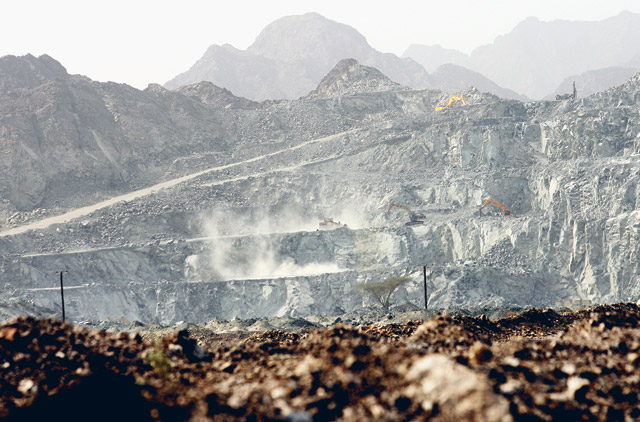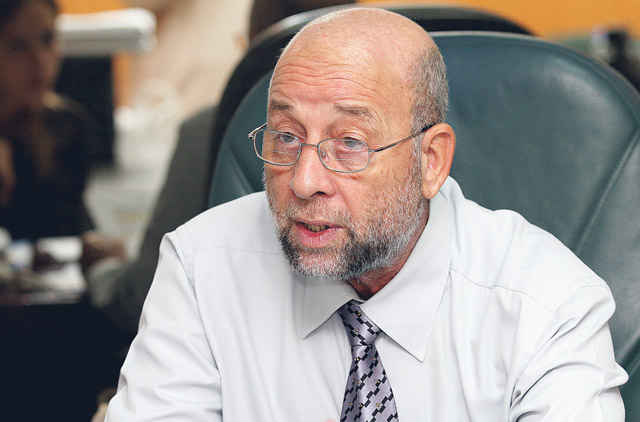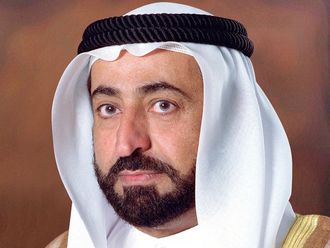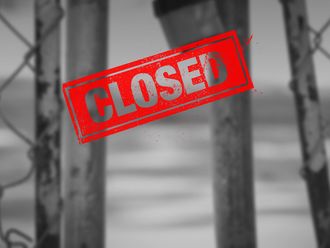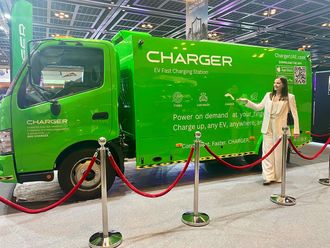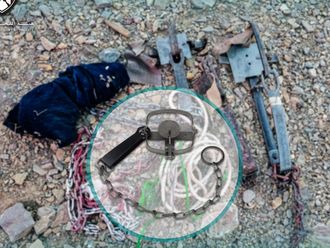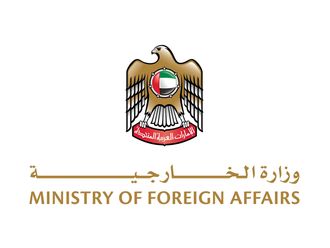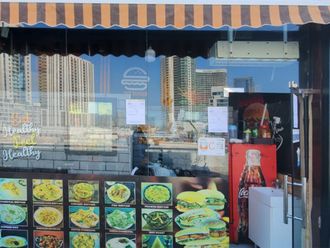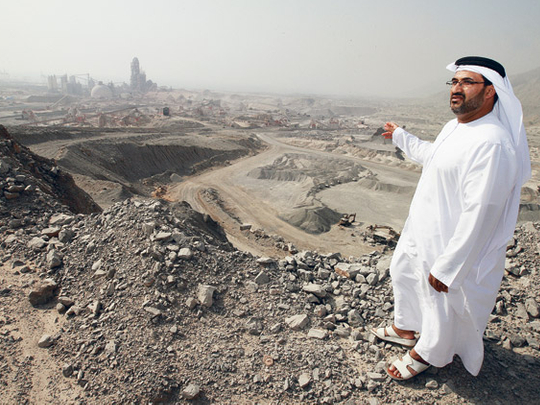
Ras Al Khaimah/Fujairah: A small white truck loaded with government air monitoring equipment travels around rural Ras Al Khaimah on a weekly basis to check the air quality the villagers of Khor Khwair say is ruining their lives because of quarrying and stone crushing facilities.
Despite being offered fully-furnished two-bedroom villas in Al Dhait Janubi — a RAK neighbourhood — by the government and a recorded 16 per cent drop in suspended particles and dust in the last year, Emirati families refuse to leave their ancestral farmlands but are demanding pollution be reduced even more.
Over the past 40 years old fishing villages like Khor Khwair flanked by Ras Al Khaimah's limestone mountains, have been squeezed out with few steadfast communities finding themselves at the heart of what is now an industrial zone and port.
Dr Saif Al Gais, executive director of the Ras Al Khaimah Environmental Protection and Development Authority (EPDA-RAK), said everything to lower pollution and emissions in the emirate's 33 quarries and crushers is being done. "Dust is the most talked about pollutant but fingers should not solely be pointed at the quarries," he said.
In the last two spontaneous federal inspections conducted by the Ministry of Environment and Water, all quarries were found to be complying with Cabinet decision No 20 of 2008 on environmental regulations for stone crushing and quarries.
"Some quarries here are very old and the population is increasing. We have put very strict rules on time of operation — we have rejected licences for quarries, stopped quarries or cancelled operations and they really suffer when they have to close for seven days or a month," said Al Gais. "When the filter is switched off it will be packed with dust so when they start again, there will be some dust emission definitely," said Al Gais.
Natural climate and the arid landscape has to be taken into consideration, he added, but so should emissions from trucks and vehicles in RAK, all contributing to lower air quality.
Refusing to leave
Saif Al Danki is a Khor Khwair fourth-generation resident and refuses to leave. Together with his brother-in-law Rashid Bin Aboud, they want a solution to be found that lets them stay on their land but not to the detriment of their health.
"We will be here forever. Our history is here," said Al Danki. Forty years ago relatives who left to find work in Kuwait or Saudi Arabia flocked back to take up jobs at the quarries — but now the quarries have turned on them, blanketing the area with a fresh layer of dust every day.
In Fujairah the situation is similar. Mosabah Salem Rashid Ahzehmi, 33, has lived in Siji all his life with his wife and three children. The quarries have popped up over the years he says, shaking the foundations of their house.
His wife Eida Mosabah Suhail, 32, said the morning blasts bring smoky dust over their house. "Sometimes we cannot even see the mosque or our neighbours' houses. What is the point in living here if we cannot even see our faces?" she said.
Creating more land
The emirate's 63 crushers and six quarries are located on the outskirts of the city, said Ali Al Sharif, geological expert from Fujairah Natural Resources Authority.
Seventy-seven per cent of Fujairah is covered by mountains, 13 per cent is left for human activities and facilities and 10 per cent is unusable land, he said. "The main activity is mining natural resources, like quarries. We want to reduce the mountains to create more land for infrastructure but to resolve one problem, we have created another problem," said Al Sharif.
"It comes on our shoulders to keep the people away from the pollution, noise and defects of the mining activity," he said. Three centres for pollution inspection and monitoring have been set up as well as a complaints' hotline.
The mined rock is being used to extend the land surface of the emirate for the North Land Reclamation project. "People will have to deal with certain conditions until it gets better. People want parks and hospitals. As the population increases we have to destroy or remove some mountains so we can provide such new projects," he said.
Operations: Meeting Standards
Stevin Rock quarry located in Khor Khwair started operations in 1975. The site spreads over approximately 4 square kilometres and produces construction aggregate.
Nasser Bustami, general manager at the plant, said the villages of Khor Khwair and Galilah are located near an industrial area that currently houses four cement plants, Stevin Rock quarry and a major bulk handling port, and so any dust emission in the industrial area may be generated from various sources.
The annual production at Stevin Rock quarry for 2010 is forecast to be 15 million tonnes with 80 per cent for the UAE and 20 per cent for the GCC.
"We are proud to confirm that our limestone aggregates are currently being used in the concrete supplied to one of the most environmentally friendly projects in the UAE, Masdar City," said Bustami. Stevin Rock has started landscaping and rehabilitation projects which include site entrances, old quarry slopes and a ‘tree planting' programme. Over 1,000 trees have already been planted.
Do you live in an area being affected by quarry pollution? How have you been affected?


